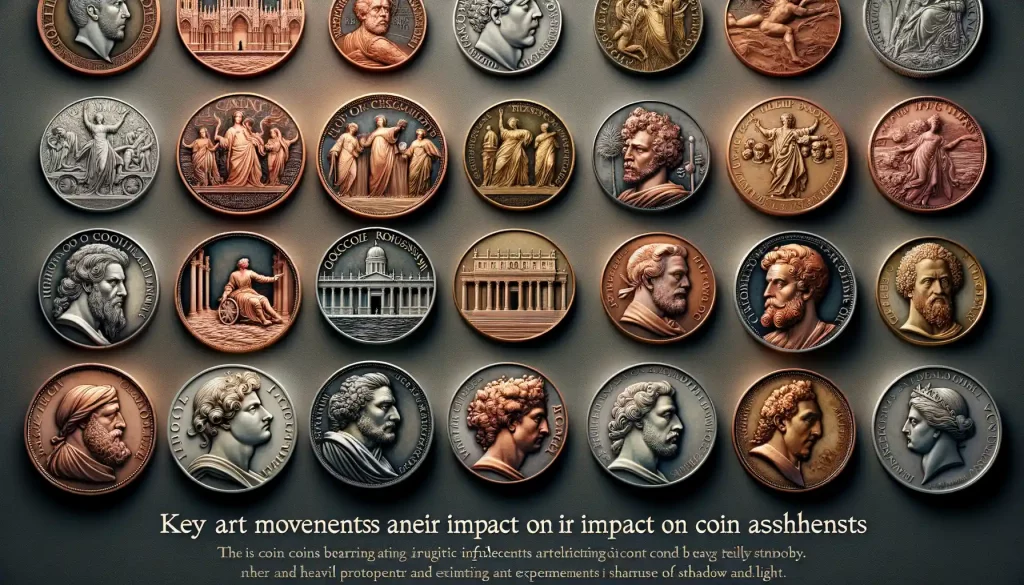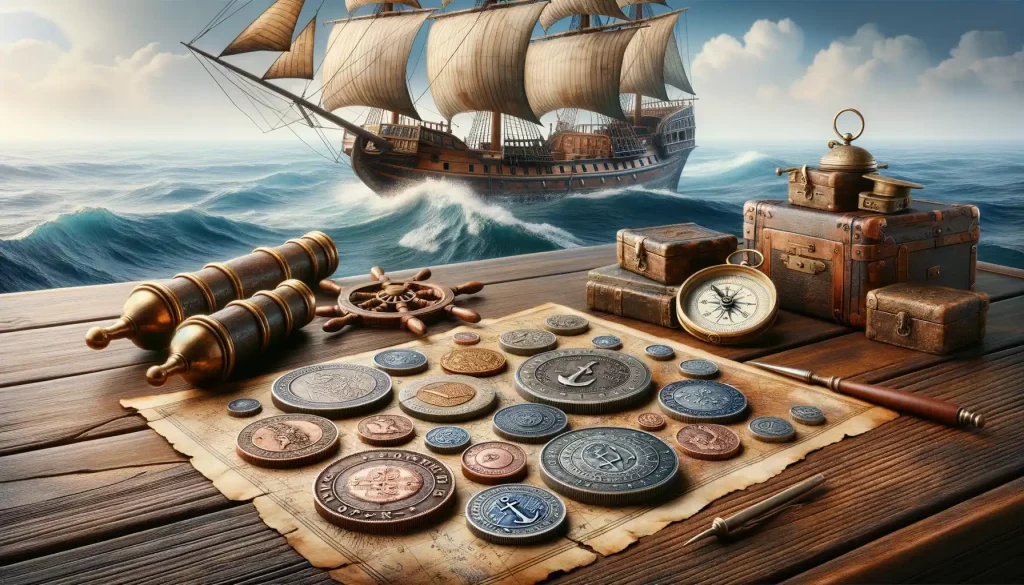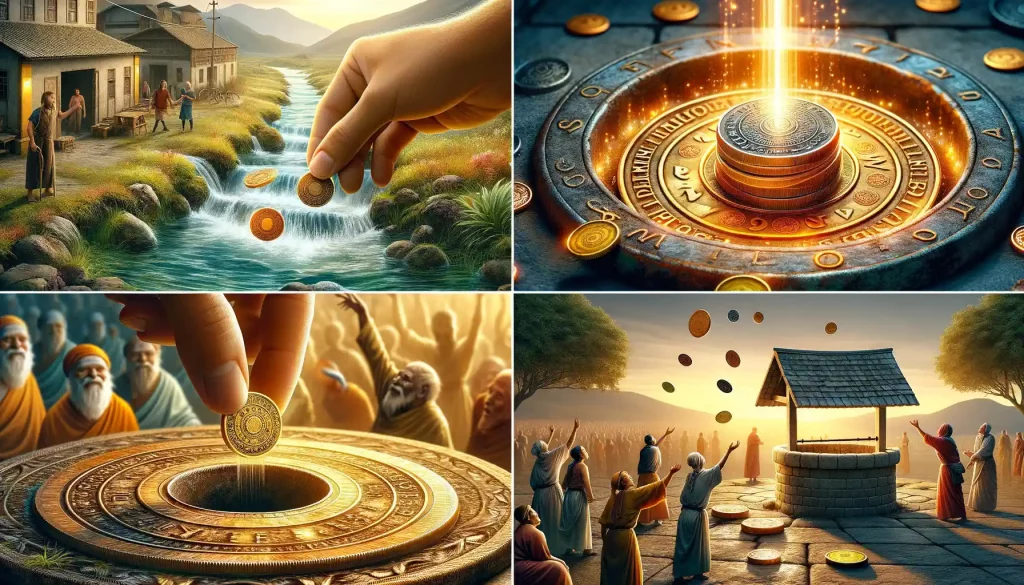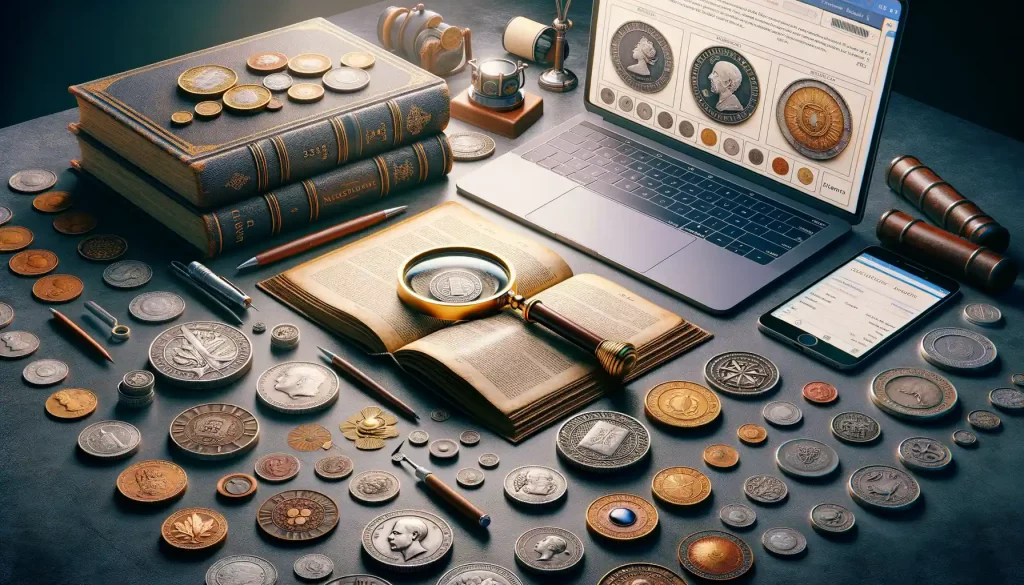Historical Overview of Coin Design and Art Movements
An Artistic Journey Etched in Metal
Coins are more than mere currency—they’re tiny canvases forged in metal, holding stories of civilizations and eras. When you flip a coin, you’re flipping through history itself! Early coins were simple, often stamped with symbols like wheat or animals, representing trade and survival. But as societies flourished, so did their appetite for beauty and storytelling.
Fast forward to the Renaissance, and coins transformed into dazzling mini-masterpieces. Influenced by artists like Leonardo da Vinci and Albrecht Dürer, engravers began immortalizing rulers and mythological scenes with jaw-dropping detail. These weren’t just coins; they were portable galleries!
The Whisper of Art Movements on Ancient Coinage
Every movement left fingerprints on coin design:
- During the Art Nouveau era, coins were graced with swirling, nature-inspired motifs, echoing the fluid lines of its architecture and art.
- The stark, geometric elegance of Art Deco later brought symmetry and bold forms to early 20th-century coinage, exemplifying modernity.
Who knew that something as small as a dime could carry echoes of entire art movements? From Greek temples to cubist dreams, coins have always been where art meets utility, making everyday transactions a little more poetic.
Key Art Movements and Their Impact on Coin Aesthetics

How the Renaissance Breathed Life into Coin Design
The Renaissance wasn’t just a rebirth of art—it was a revolution, and coins felt its impact in profound ways. Picture this: tiny masterpieces in your hand, inspired by artists like Leonardo da Vinci and Michelangelo. During this era, coin design shifted from functional to fabulous. Suddenly, intricate portraits of rulers appeared, sculpted with astonishing realism, as if the figures might blink at any moment.
A notable feature? The use of perspective and detailed shading techniques. Coins from this period are miniature time capsules, reflecting architecture, mythological themes, and even celestial symbols. The Renaissance didn’t just elevate coins—it turned them into storytelling devices, bridging art and currency as never before.
The Bold Geometry of Cubism and Art Deco in Coins
Fast forward to the 20th century, and the sharp, angular world of Cubism and Art Deco barged onto the scene. These weren’t shy movements—they wanted attention! Coins inspired by Art Deco, for example, flaunt clean lines, geometric patterns, and timeless elegance. Think about the 1930s US Mercury dime, with its sleek, almost futuristic design.
Here’s what Cubism introduced to the mix:
- Fragmented structures and unexpected symmetry.
- A touch of abstraction that pushed the boundaries of traditional aesthetics.
These styles shattered conventions, proving that coins could be bold, experimental, and unapologetically modern.
Notable Examples of Coins Inspired by Art Movements
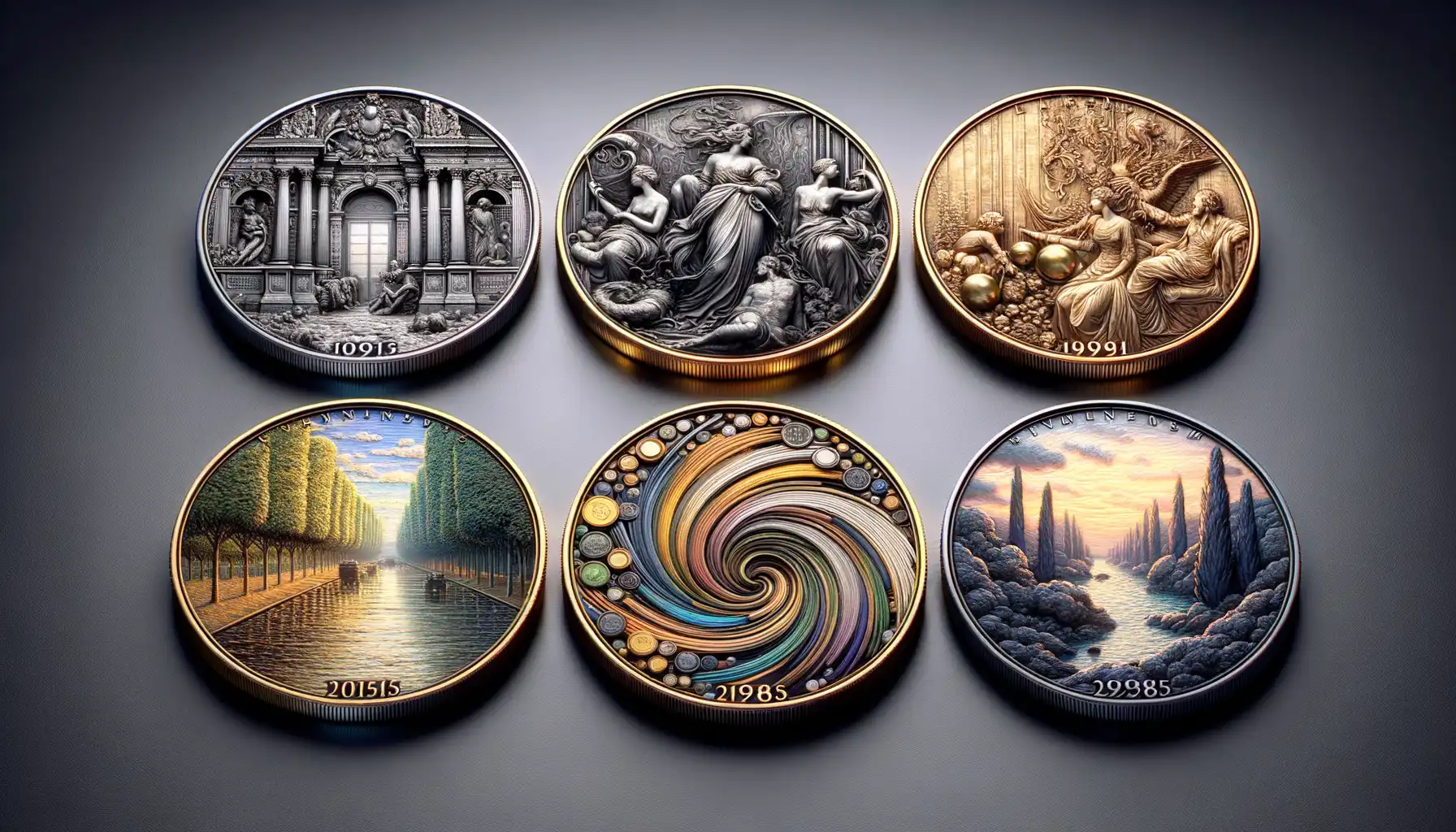
A Portrait of Impressionism in Coinage
Imagine holding a coin that seems to shimmer under the light, its surface almost alive with energy. That’s the magic of coins inspired by the Impressionist movement. Take for instance the French €10 coin celebrating Claude Monet’s “Water Lilies.” The design doesn’t just sit there—it dances, capturing the fleeting play of light and shadow, much like Monet’s own technique. The coin’s subtle texture mimics brushstrokes, making you feel as if you’ve stepped into an open-air painting, surrounded by soft pastels and rippling reflections.
For collectors, this isn’t just money—it’s poetry etched in metal. You might even catch yourself tilting it back and forth, marveling at how something so small can evoke such grandeur, a tiny window into the 19th-century art world.
Art Deco Meets Precious Metal
Then, there’s the bold drama of Art Deco, immortalized on coins like the UK’s Great Exhibition of 1925 commemorative series. Think symmetry, geometric perfection, and a sense of optimism frozen in time. Imagine a coin where the sleek lines and shapes look like they’ve been pulled straight out of a Gatsby party—glamorous, confident, and unapologetically modern.
- The intricate sunburst patterns throw you back to the Roaring Twenties.
- Sculptural figures often adorn these coins, reflecting the industrial spirit of the time.
Owning one feels like clutching a slice of cultural history—a tangible link to an age where style and innovation ruled supreme.
Techniques Used to Incorporate Art Styles into Coins

Mastering the Art of Coin Craftsmanship
Art doesn’t simply appear on a coin—it’s brought to life through an intricate dance of creativity, engineering, and craftsmanship. To translate the elegance of an art movement onto a small metallic canvas, designers employ a variety of techniques that feel as much like alchemy as they do artistry.
One of the most enchanting methods is **relief engraving**, where artists sculpt designs with varying depths to create lifelike elements. Think of a Renaissance-inspired coin: the gentle curls of a cherub’s hair or the folds of a toga practically beg you to reach out and touch them. There’s something magical about how light plays on these surfaces, casting shadows that make the design pop.
Meanwhile, **micro-etching** turns coins into tiny galleries of detail. This technique allows for the reproduction of intricate patterns, like the dizzying geometry of Art Deco or the dreamy swirls of Art Nouveau.
- For designs inspired by Cubism, bold geometric forms are achieved using precise laser engraving.
- Colorization techniques splash coins with hues reminiscent of Impressionist masterpieces.
Each method is a love letter to the artists who inspire them—a fusion of ancient craftsmanship and modern technology that transforms coins into portable pieces of history.
The Future of Coin Design Influenced by Art
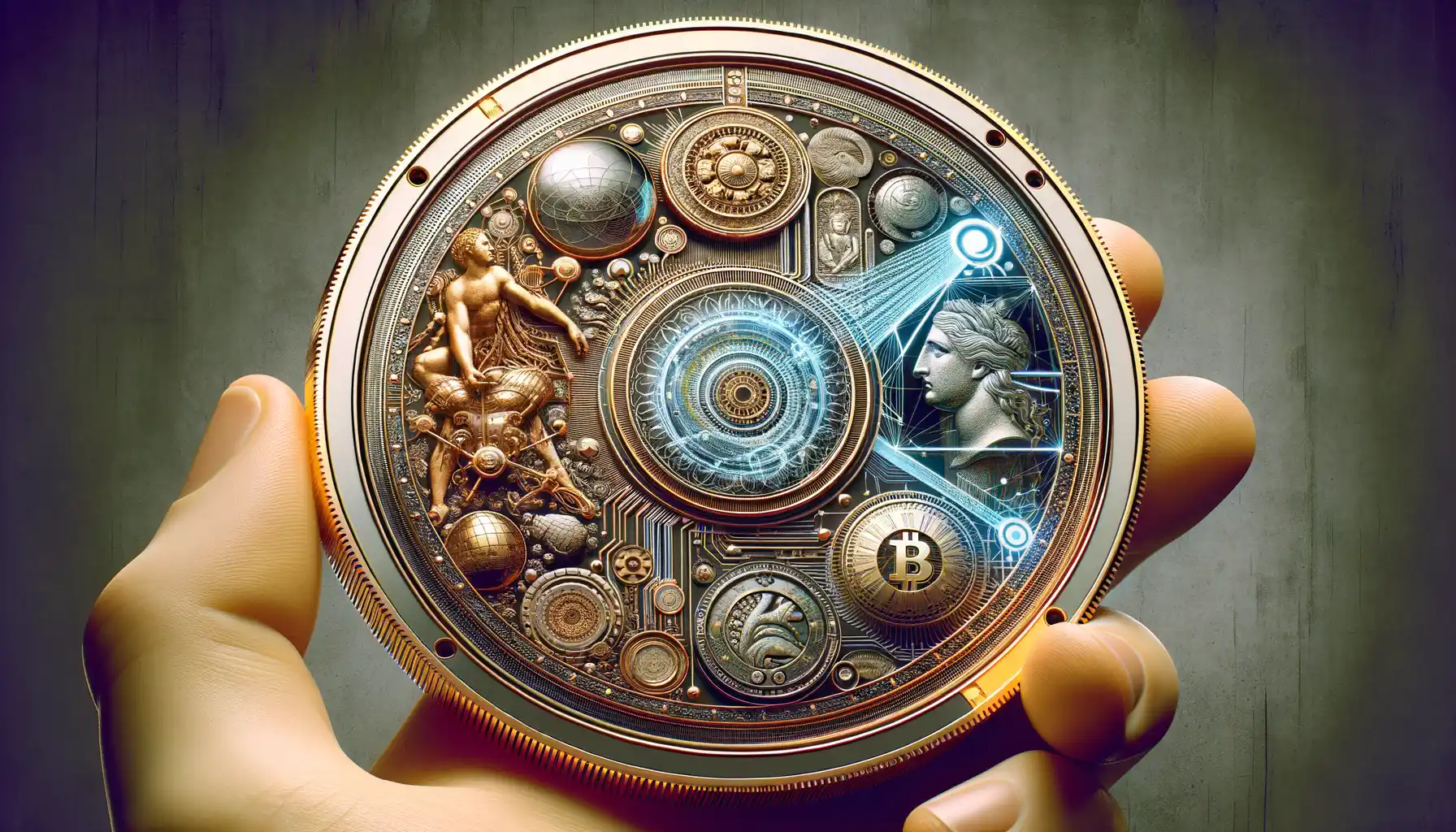
A Canvas of Possibilities: Where Coins and Art Intersect
Imagine holding a coin that feels more like a miniature masterpiece than mere currency. The future of coin design is poised to embrace artistry in ways we’ve only dreamed of. Forget the plain, symmetrical shapes; coins are becoming a playground for creative expression, where every curve and engraving tells a story.
We’re talking about coins inspired by movements as bold as Surrealism—think melting clocks reimagined into flowing borders—or the clean, minimalist lines of Bauhaus, transforming coins into sleek, modern tokens. The intricacies could go deeper thanks to evolving technologies like 3D printing and laser engraving.
- Dynamic textures: Imagine a coinface that mimics brushstrokes or chiseled stone. Yes, even coins can give your fingertips an art lesson.
- Interactive designs: Holographic elements and augmented reality could make coin art come alive, literally turning them into “living sculptures.”
More Than Metal: What Shapes the Future?
The materials themselves might transform. Picture biometallic coins blending vibrant hues, or eco-friendly alternatives like recycled metals. And let’s not forget collaboration possibilities—future coins could feature contributions from celebrated artists, bridging the gap between galleries and your pocket.
The most thrilling part? These designs won’t just be visually stunning; they’ll reflect us—our values, culture, and dreams, encapsulated in tiny, enduring artworks.

